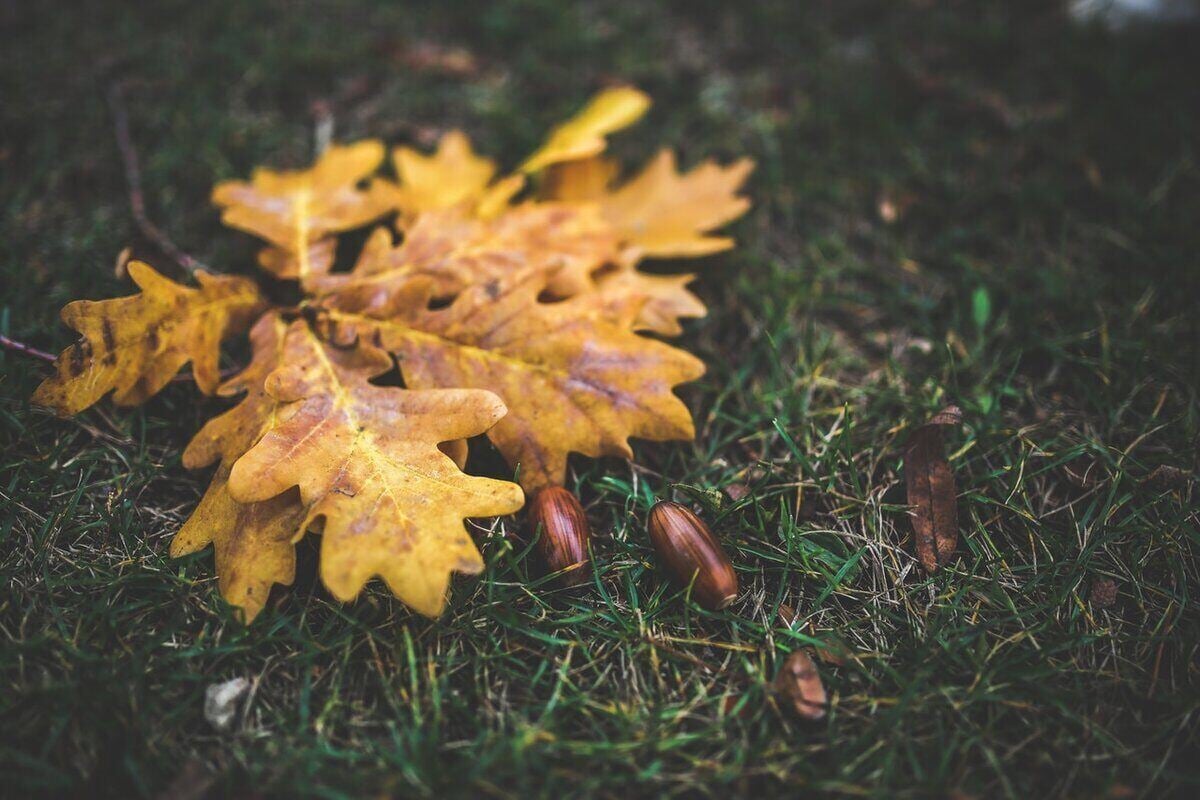
You look out over your perfect dominion of green and color and revel in the warm fuzzies. But wait! What’s that? Something is causing discoloration of your oak tree. What could it be? In this article, you’ll learn about oak tree diseases and how to treat them.
Many diseases in oak trees can be identified with only a little knowledge. By inspecting leaves and trunks, and looking for dead branches, you can figure out what ails your oaks. Fortunately, many diseases require no treatment. Others, though, require immediate removal.
Read on to determine what’s distressing your oak tree:
Prevention is the Best Medicine
As is true with most things, proper care is the best defense against any illness or setback. Oak trees, like all plants, benefit from adequate water, sunlight and good soil conditions. To keep trees healthy and stress-free, ensure the following:
- Apply about a 3-inch deep layer of organic mulch out to the dripline; do not pile mulch against the trunk. Keep it at least 6 inches away from the base of the tree.
- Do not apply weed killers near the tree.
- Use slow-release fertilizers in early April if necessary.
- Water trees during droughts, providing about 1 inch of water weekly.
- Protect trees and root systems from damage. Wounds from construction, lawnmowers, weed-whackers, and even pruning can be the impetus for disease.
- Promptly remove and dispose of infected trees and grind stumps to prevent disease spread.
- Plant disease-resistant oak trees. But first, check the pH of your soil. Oak trees like a lower pH.
How to Identify and Treat Oak Tree Diseases
According to Encyclopedia Britannica, oaks come in three groups: white, red, and black. Common species in North America include:
- Pin oak (Quercus palustris)
- Northern red oak (Q. rubra)
- White oak (Q. alba)
- Bur oak (Q. macrocarpa)
With a life span of over 200 years, oaks are truly mighty. They live in nearly every U.S. state. There are over 500 types (over 90 in the United States), but disease, illness, and injury can affect them all. Here are some diseases that can affect your oak.
Anthracnose
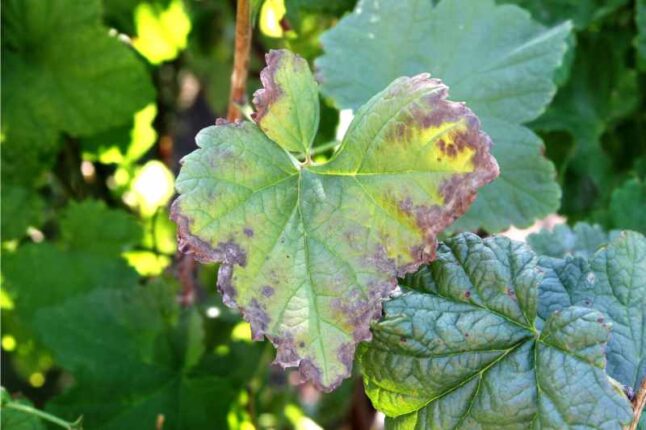
Trees may lose their leaves in severe anthracnose, but they often refoliate before the summer is over. This type of oak tree fungus can survive winter in buds, twigs, fruit, fallen leaves, or petioles (where the leaf’s stem joins it to a branch).
Symptoms: Small, brown spots form on the new leaf surface and on new twigs. Dead areas appear along the leaf veins, mostly on lower branches. Leaves can cup or become distorted and may eventually take on a brown, papery appearance.
Causes: Cool, wet weather helps incubate and easily spread this fungus (Apiognomonia quercina).
Season: Anthracnose takes hold during the spring and cool summers.
Risk Level: Anthracnose is a common white oak tree disease, as this species is more susceptible to anthracnose than other oak species. This disease can affect all oaks as well as many other plants and vegetables. However, it is rare for trees to die from this infection.
Treatment: In general, the best treatment includes pruning dead twigs and branches during dormancy; also prune to increase air and light circulation. Rake leaves when they fall and destroy them. For severely damaged trees, apply an appropriate fungicide to protect new growth.
Armillaria Root Rot, or Honey Fungus
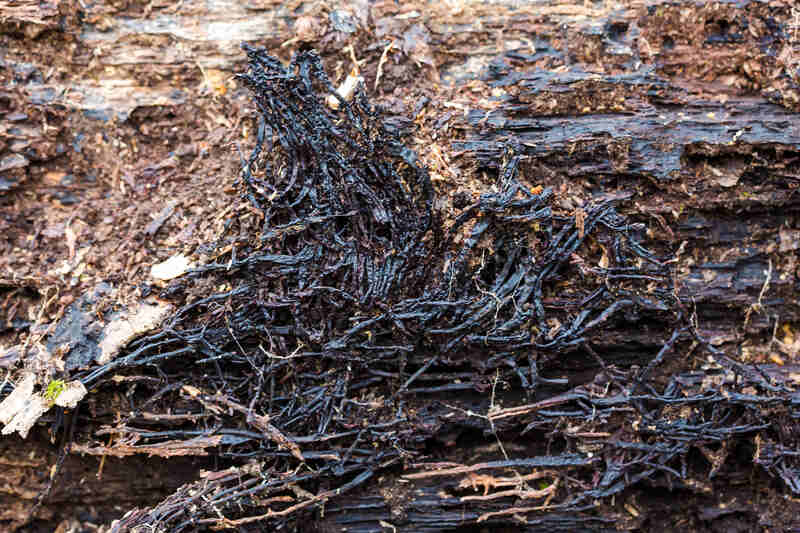
Stress imparts an increased susceptibility to armillaria root rot, which causes a slow tree decline. You may see dead limbs at the top of the oak. The roots and lower trunk decay, leading to the tree falling over in storms, including hurricanes.
Symptoms: At first, white mats of fungus peel or shave off the bark on the lower portions of trees. Rhizomorphs, which look like dark shoestrings, then appear. They can grow a few inches or several feet long. The rhizomorphs create vast underground networks, expanding 2 to 4 feet per year, that can affect nearby plants.
Finally, honey-colored mushrooms form at the base of the tree in the late summer or autumn. These growths appear in large groups. Mushrooms can also appear throughout the yard, a sign of disease spread.
Causes: Wet weather, tree wounds (such as those from lawnmowers, weed trimmers, and construction), and improper drainage increase the likelihood of armillaria root rot from this fungus (Armillaria mellea).
Season: Damage appears in late summer and autumn.
Risk Level: All varieties of oak are susceptible.
Treatment: This root rot leads to a slow decline; diseased trees can fall. Remove infected trees and their entire root system. Have nearby plants checked for this infection.
Bacterial Leaf Scorch
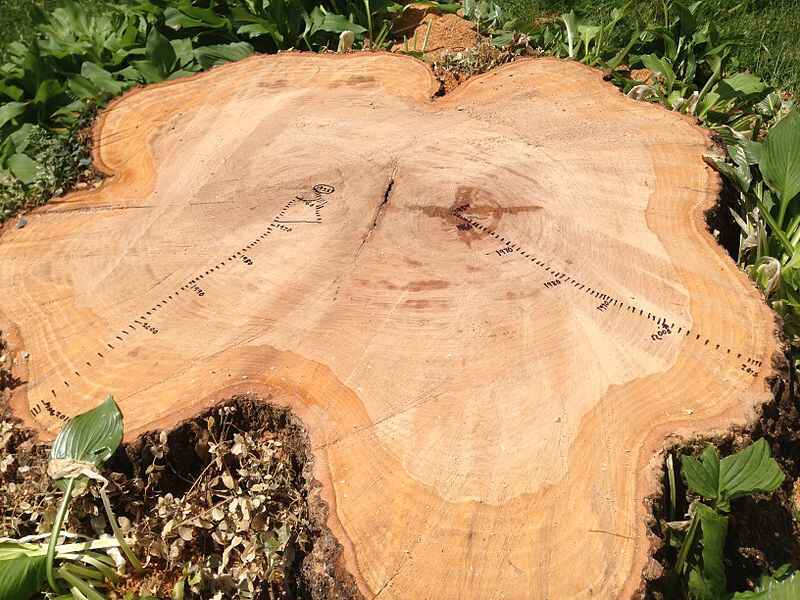
In bacterial leaf scorch, the leaves resprout year to year, but the disease reappears. It can be found in different spots throughout the oak, and the symptoms may vary in the various types of oak. Laboratory analysis is the only method of confirming the disease.
Symptoms: The edges of leaves turn brown, beginning on the inner, lower portions of a pin oak. A reddish-colored band sometimes develops between the brown and green on the leaf. In other red oaks, the tips brown, a process that progresses toward the stem. Branches begin to die randomly.
Causes: Leafhoppers and spittlebugs carry the Xylella fastidiosa bacterium, which infects the tree and disrupts water movement throughout it.
Season: Symptoms remain undetected for years before they appear in mid to late summer, typically after a summer drought.
Risk Level: Bacterial leaf scorch is most common in pin, red, white, and bur oak varieties.
Treatment: No treatment exists because the bugs causing bacterial leaf scorch are difficult to control. Annual oxytetracycline injections by a professional can aid, but not cure, the disease. Trimming and destroying affected branches can help. Eventually, usually within 5 to 10 years after initial symptoms appear, trees need to be removed.
Bacterial Wetwood, aka Slime Flux
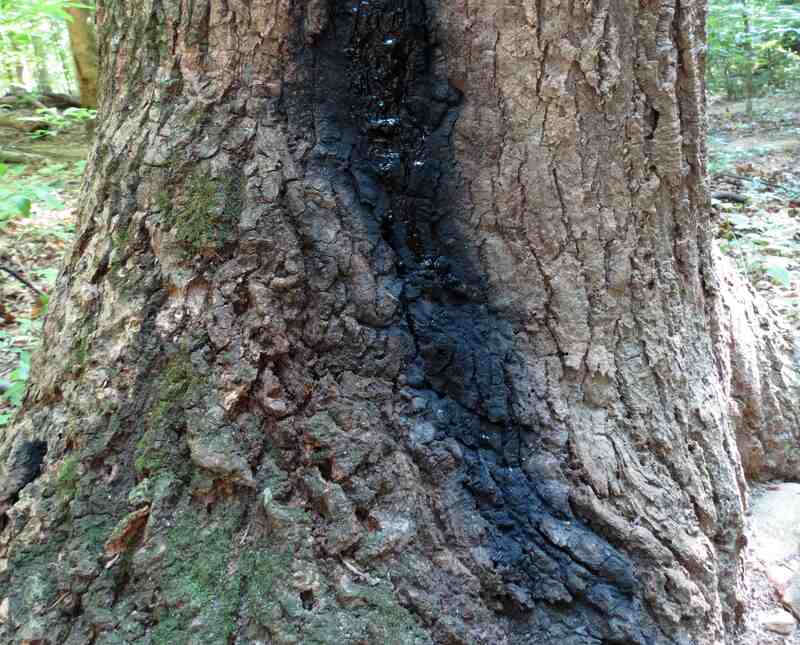
In bacterial wetwood, organisms infect the heartwood (center) of the tree and start a build-up of pressure that forces ooze, called “slime flux,” out cracks and wounds. Young trees may wilt, whereas the vigor of older trees declines or branch dieback occurs in the upper crown.
Symptoms: Dark streaks of slimy sap ooze from the bark and typically carry an unpleasant odor. These streaks may lighten and become light brown or gray. The liquid may kill plants below the tree.
Causes: Many different bacteria, including species of Enterobacter, Klebsiella, and Pseudomonas, cause this disease when they enter the tree’s heartwood through wounded, soaked bark.
Season: Slime flux starts in late spring and lasts throughout the summer.
Risk Level: All oaks can develop this disease, but bacterial wetwood is an especially common pin oak disease. Wetwood may protect against wood-rotting fungi.
Treatment: The general health of a tree is unaffected by wetwood. However, once a tree has this disease, only ameliorative measures work. Care for sick trees as normal and minimize stress as much as possible. Do not use drain tubes because they cause additional wounds that could lead to additional oozing.
Chlorosis
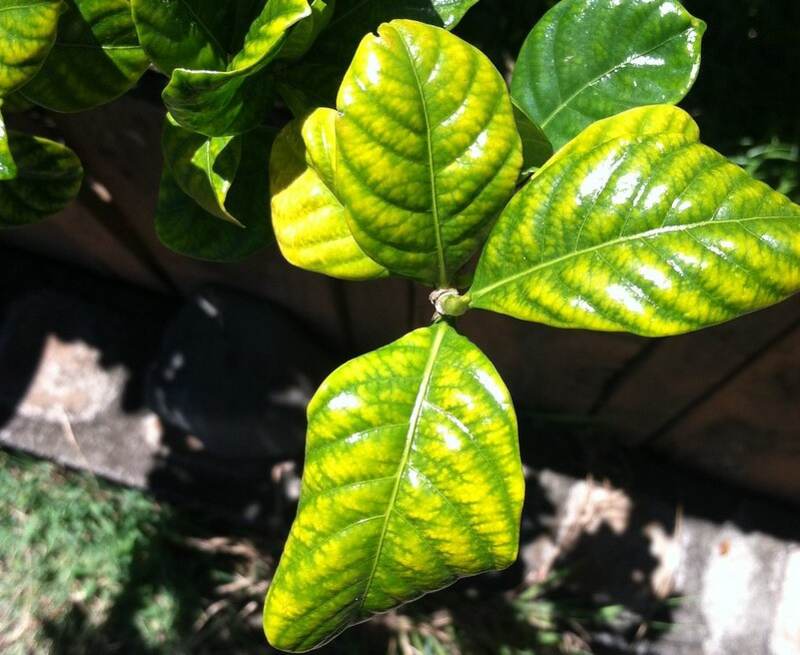
Even oak trees can develop iron-deficiency anemia. Chlorosis causes the leaves of the tree to yellow or turn bright green. It often occurs where the topsoil has been disturbed, such as new subdivisions.
Symptoms: Yellowing of the leaves occurs. Tree limbs may begin to die after an oak has had the disease for several years.
Causes: When iron deficiency occurs in oak trees, leaves cannot make chlorophyll, resulting in their yellow appearance. An alkaline soil with a pH of greater than 7.5 can cause chlorosis in pin oaks. Bur oaks like a pH of 5.5 or below.
Season: Chlorosis can occur any time after leaves have sprouted.
Risk Level: Severe chlorosis that remains untreated defoliates and weakens oaks, which may eventually die. Susceptible species are pin oak and white oak.
Treatment: The best treatment is prevention; don’t plant oaks in high-pH areas. To lower the soil pH around grown trees, apply iron sulfate or sulfur.
Iron chelates improve the yellowing but only for a short time; it is expensive, too. Iron can be sprayed on the foliage or injected into the tree by an arborist but lasts only a year and doesn’t address the root of the problem.
Ganoderma Root Rot
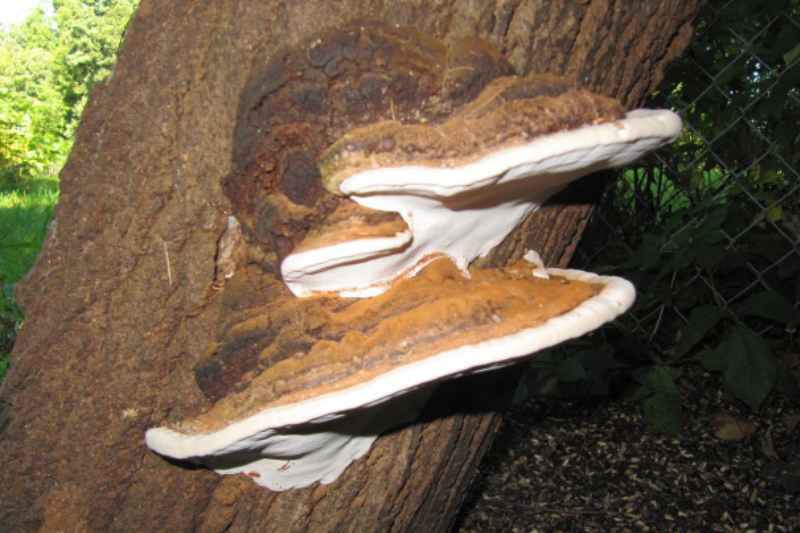
Drought and injury increase the risk of ganoderma root rot. Tree growth slows, and dying branches produce smaller, yellowed leaves.
Symptoms: Shelf-like mushrooms (conks) form on the wood near the soil line; they usually appear brown to reddish and can grow up to 30 inches wide, depending on the species.
Causes: The fungi species Ganoderma zonatum, G. lucidum, and G. applanatum cause this root rot. Fungal spores spread through the wind and infect the tree, leading to wood decay.
Season: During humid periods of the summer, the conks release spores, which infect open wounds on susceptible trees. Conks may be seen each summer and autumn.
Risk Level: All species of oak are susceptible, but proper care reduces the risk.
Treatment: Ganoderma root rot may take years to kill, sometimes as little as 3 to 5 years. However, the tree will be susceptible to significant wind damage and should be removed as soon as possible after the conks appear.
Hypoxylon Canker
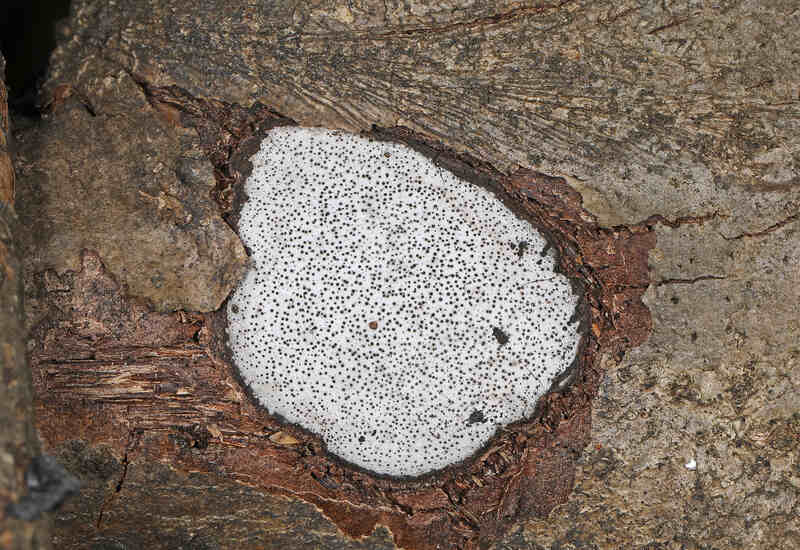
Stressed trees often host hypoxylon canker. The death of branches and leaves at an oak’s crown provides the first clue to this white-rot fungal disease. The wood decays, causing loss of structural integrity.
Symptoms: If the stress isn’t resolved, the outer bark sloughs off, showing tan to silver-gray to black fungal stromata (compact masses of a fungus) on the trunks and branches. Dieback eventually occurs.
Causes: Reduced water uptake by stressed trees, including from drought and construction damage, usually causes some form of injury to the roots. Biscogniauxia atropunctata (formerly Hypoxylon atropunctatum) then infects the tree.
Season: Hypoxylon canker often occurs in stressed oaks after a drought.
Risk Level: Most species of oak are susceptible but the black oak group more so than the white.
Treatment: There is no treatment, but removing damaged branches can help slow the progression of hypoxylon canker. The tree will eventually die. Removal can prevent the tree from becoming a hazard from wood decay and may reduce spread to other trees.
Inonotus Root Rot
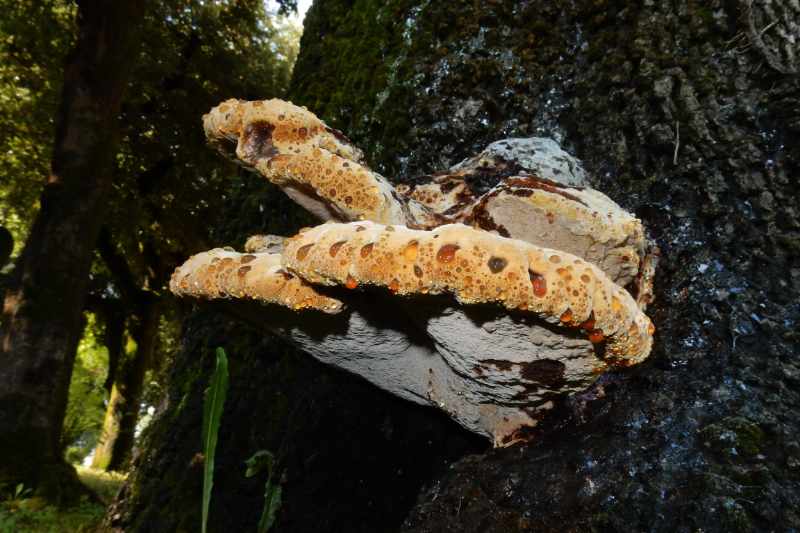
Branch dieback takes place in inonotus root rot, the most common wood-rotting fungus. The oak tree has fewer leaves, which are usually yellowed. However, the tree may fall before signs become evident. Inonotus root rot may also be called oak bracket and weeping polypore.
Symptoms: Other signs include very large, light yellow to yellowish brown conks (mushrooms) at the base of the tree; the conks may “weep” a yellowish liquid. Old conks turn black.
Causes: The fungus Inonotus dryadeus (formerly Polyporus dryadeus) enters through wounds in the bark, including pruning, lawn mower, and weed-trimmer injuries.
Season: Infection occurs at any time, and severe damage becomes noticeable in summer and early autumn.
Risk Level: This disease is terminal.
Treatment: The only option is to immediately remove the tree.
Laetiporus Root Rot
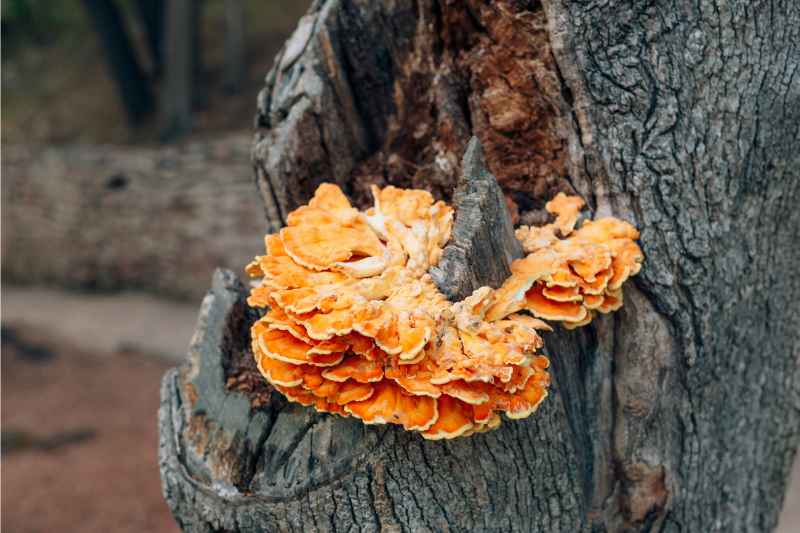
The appearance of yellow to pinkish to orange, shelf-like conks herald severe tree infection in laetiporus root rot. The conks can range in size from 2 inches to more than 20.
Symptoms: Eventually, the conks turn white with age. The bark where these mushrooms form becomes brown, brittle, and cracked. Some call these edible conks “chicken of the woods” because they taste like chicken.
Causes: Injuries to other trees allow Laetiporus sulphureus, now L. gilbertsonii, to invade the oak’s root system and attack the heart of the tree, decaying its wood.
Season: Growths form in summer and autumn and fall off in winter.
Risk Level: By the time fruiting structures grow, significant damage is already done, and the tree has become susceptible to wind damage and toppling.
Treatment: The tree should be removed at the first sign of laetiporus root rot to avoid costly expenses such as roof repair.
Oak Leaf Blister
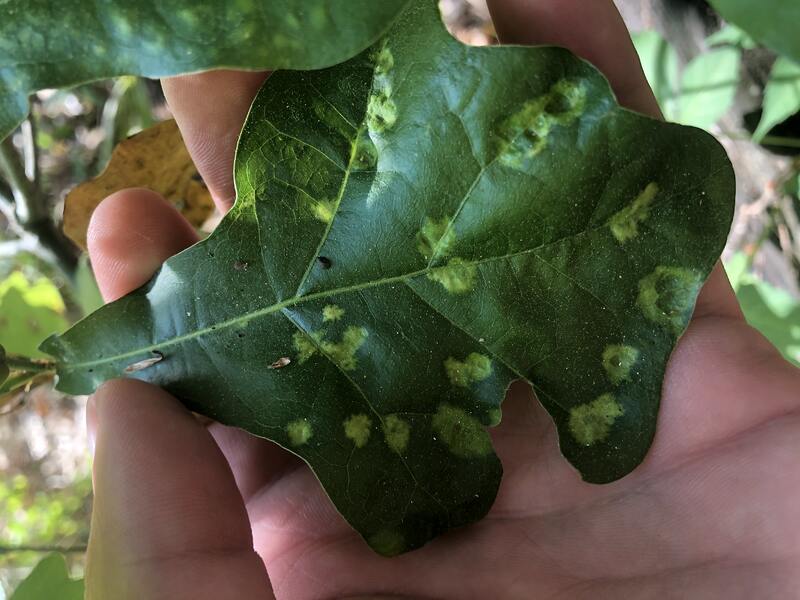
Spots up to 2 inches in diameter turn light green as the leaf with oak leaf blister grows; the spots eventually become brown. The leaves can bulge, become depressed, cup, and twist.
Symptoms: Blisters raise in the center of the spots. When it has too many spots, a leaf can fall off the tree.
Causes: Secretions from Taphrina caerulescens lead to overgrowth of leaf tissue, causing the blisters.
Season: The disease tends to occur during especially damp spring seasons. Only minor infection occurs if the conditions are unfavorable for the pathogen.
Risk Level: Red oaks are the most susceptible. Leaves become resistant to infection the older they are.
Treatment: Any fallen leaves should be raked and discarded to help prevent infection the following year. An unsightly disease, oak leaf blister requires no treatment, although an appropriate oak tree fungicide treatment can be sprayed as a protectant before buds appear in small trees.
Oak Wilt
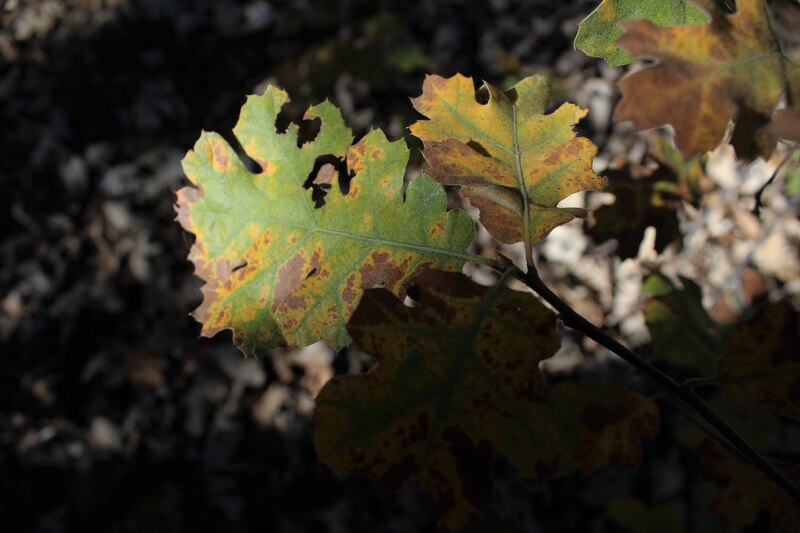
The pathogen causing oak wilt blocks water and nutrients from moving properly throughout the vascular system (water-bearing tissue) of the tree. It causes leaf drop and death.
Symptoms: Leaves at the crown of red oaks turn red-brown or bronze around the edges; there is a sharp line between the bronze and green. Damage progresses downward through the tree. Extensive leaf drop occurs by late summer.
Fungal mats develop and may cause the bark to fall off. Brown or black discoloration can develop in the outer sapwood, the area of tree just inside the bark.
Causes: Sap beetles introduce the oak wilt fungus Bretziella fagacearum (formerly Ceratocystis fagacearum) into tree wounds or through root grafts.
Season: Oak wilt disease appears in spring and early summer, but trees are more vulnerable during spring.
Risk Level: Red oaks are most susceptible and often die within a few months after symptoms appear. White oaks are somewhat resistant and may take years to die.
Treatment: All trees with oak wilt die. The disease quickly spreads to nearby oaks. Remove infected trees swiftly and inject neighboring oaks with the systemic fungicide propiconazole to inhibit spread. You can also dig trenches between trees to help prevent spread, which happens quickly.
Powdery Mildew
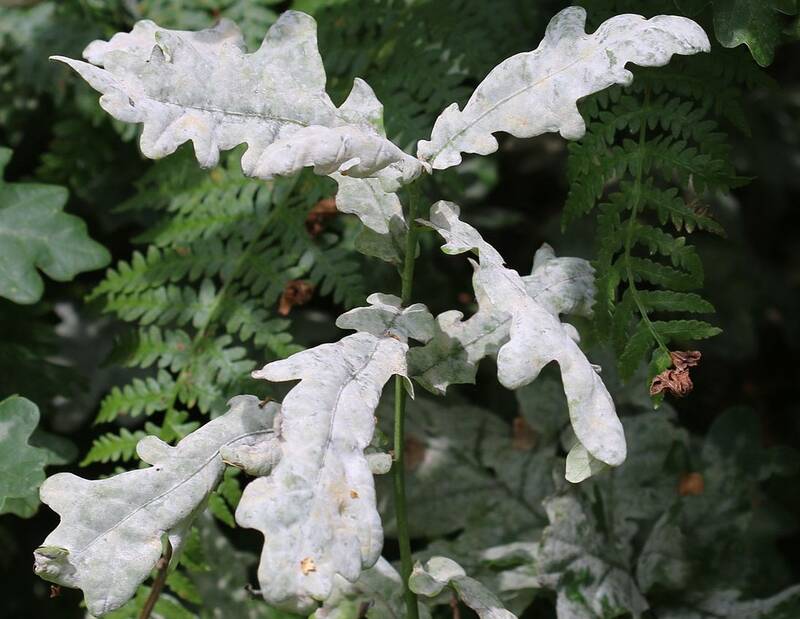
The disease powdery mildew invades canopies with poor air circulation and young foliage in cool, moist shade. Foliage may turn yellow, curl, and drop early. Powdery mildew is a common tree fungus in oaks and many other trees.
Symptoms: This white fungus on oak trees looks like baby powder. It develops on both the top and bottom surfaces of the oak’s young leaves. Tiny black or orange, pepper-like spots may appear.
Causes: Created by fungi (several species), spores distribute to young leaves via wind and rain after riding out the winter in structures on fallen leaves.
Season: Spring and autumn, which have cooler temperatures, provide conditions for this disease to thrive. The fungi prefer humid conditions when nights are cool and days are warm.
Risk Level: The most vulnerable tree is the pedunculate oak (Quercus robur), but young oaks are also susceptible.
Treatment: Powdery mildew causes no significant damage because it appears late in the growing season; therefore, it requires no treatment. If it is especially bad, a fungicide can be applied when the tree is dormant. Remove fallen leaves, which can spread the pathogen, and prune in the winter to provide air and light circulation in the canopy.
Sudden Oak Death
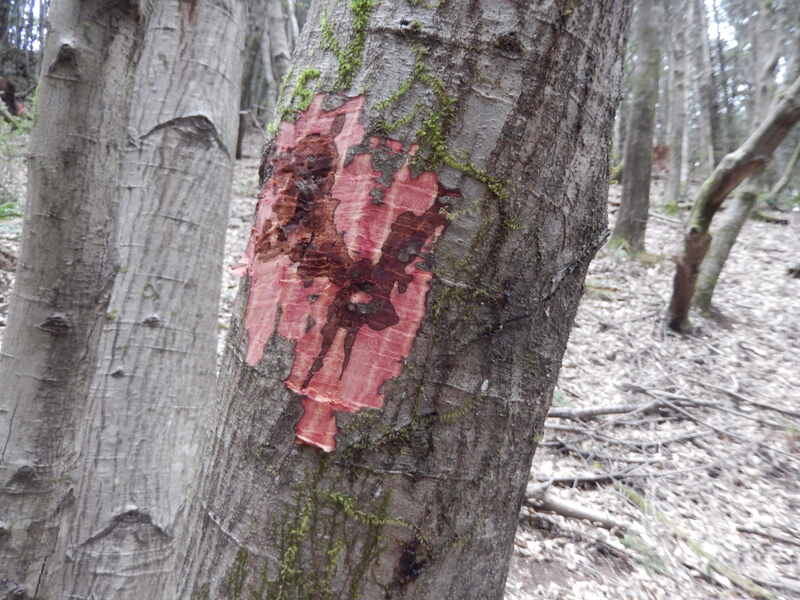
The outbreak of sudden oak death began on the West Coast and has been confirmed in other states. Its pathogen, Phytophthora ramorum, likes cool, wet areas.
Symptoms: Bleeding cankers in the lower 10 feet of the trunk are typically the first visible symptom. These cankers seep reddish-brown to tar-black, viscous liquid. After bleeding begins, color changes rapidly from green to yellow or yellow-white and then brown.
Causes: The water mold Phytophthora ramorum spreads via rain and wind from and to oaks via infected plants, such as rhododendron, lilac, and other shrubs, from nurseries and other stores.
Season: The pathogen becomes active in the spring. Cankers may surround the tree trunk and kill the oak. Insects (beetles) and other plant diseases may take advantage of the disease and hasten tree death.
Risk Level: Susceptible species include red oaks.
Treatment: There is no cure. Some oaks die within a year. Others may survive a number of years after bleeding cankers appear. The tree, and any other plants with sudden oak death, should be uprooted and destroyed.
Tubakia (Actinopelte) Leaf Spot
New or stressed trees seem to be at the most risk of tubakia leaf spot, which is also known as “actinopelte leaf spot.” Severe infections cause premature leaf drop and twig cankers.
Symptoms: Circular, dark to reddish-brown spots appear on the leaves, primarily on the red oak. Each spot can be ¼ to ½ inch in diameter, and spots can eventually run together, creating blotches. A yellow halo surrounds each spot.
Causes: Wet weather increases the vigor of this complex fungus (Tubakia dryina [formerly Actinopelte dryina]).
Season: The disease can survive winter in infected twigs and leaves that do not drop, with signs emerging after bud break. Symptoms are most prevalent in the late summer and early fall.
Risk Level: Red oaks are more vulnerable than other oaks, as are young and stressed trees. Ascertain what stress factors are affecting the tree and resolve them. The most common stressor is iron deficiency.
Treatment: Rake and destroy all infected leaves to slow the spread of actinopelte leaf spot, which occurs with wind and rain splash. Spraying with a fungicide may be indicated for small trees that have lost their foliage several years in a row.
FAQ
How Do I Know if my Oak Tree is Healthy?
Do the scratch test. Green tissue lives below a healthy oak tree’s bark. However, if this tissue is brown or yellow, the tree is probably dying. Be careful performing this test; wounds in an oak can be invitations to disease.
Besides Disease, What Can Affect How My Oaks Appear?
Oak galls are abnormal, usually rounded growths on the leaves, twigs, and branches; they come in many sizes. Fusiform rust is a pine disease that spreads from pine to oak back to pine again; yellow to black spots appear on the leaves.
Sooty mold grows on honeydew, a sticky liquid excreted by plant-sucking insects; dark mold covers leaves and limbs. Oak borers tunnel under the bark. And defoliators such as caterpillars, sponge moths, cankerworms, and Japanese beetles can eat your leaves.
What Makes Oaks Susceptible to Disease?
A stressed tree is more liable to “catch” a disease. Many times, disease enters through wounds caused by construction, pruning, insects, lawn mowers, and weed trimmers. Drought and too much moisture can attract molds and bacteria.
Call the Doctor
When it comes to oak tree sickness, there are instances where only licensed arborists can provide the necessary expertise to nurse them back to health. If you haven’t been able to remedy the issue in one or two growing seasons, and the disease will ultimately kill the tree, it’s time to bring in support.
For severely damaged arbors, particularly those prone to wind and breakage, it is always best to seek out a licensed, insured, and experienced tree care expert. With some varieties reaching heights of 100 feet, oaks need to be handled carefully and skillfully.
Main Image Credit: Pexels